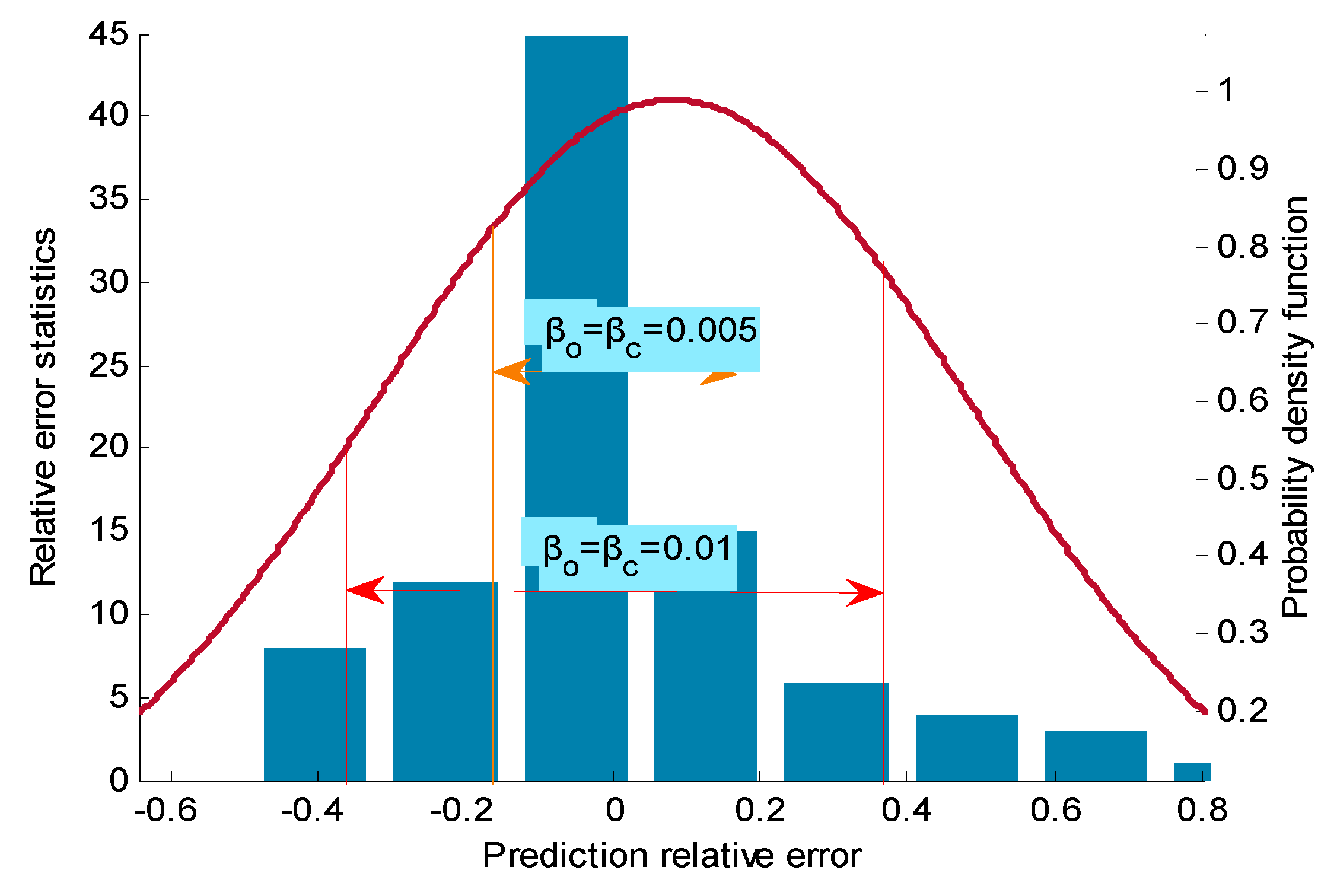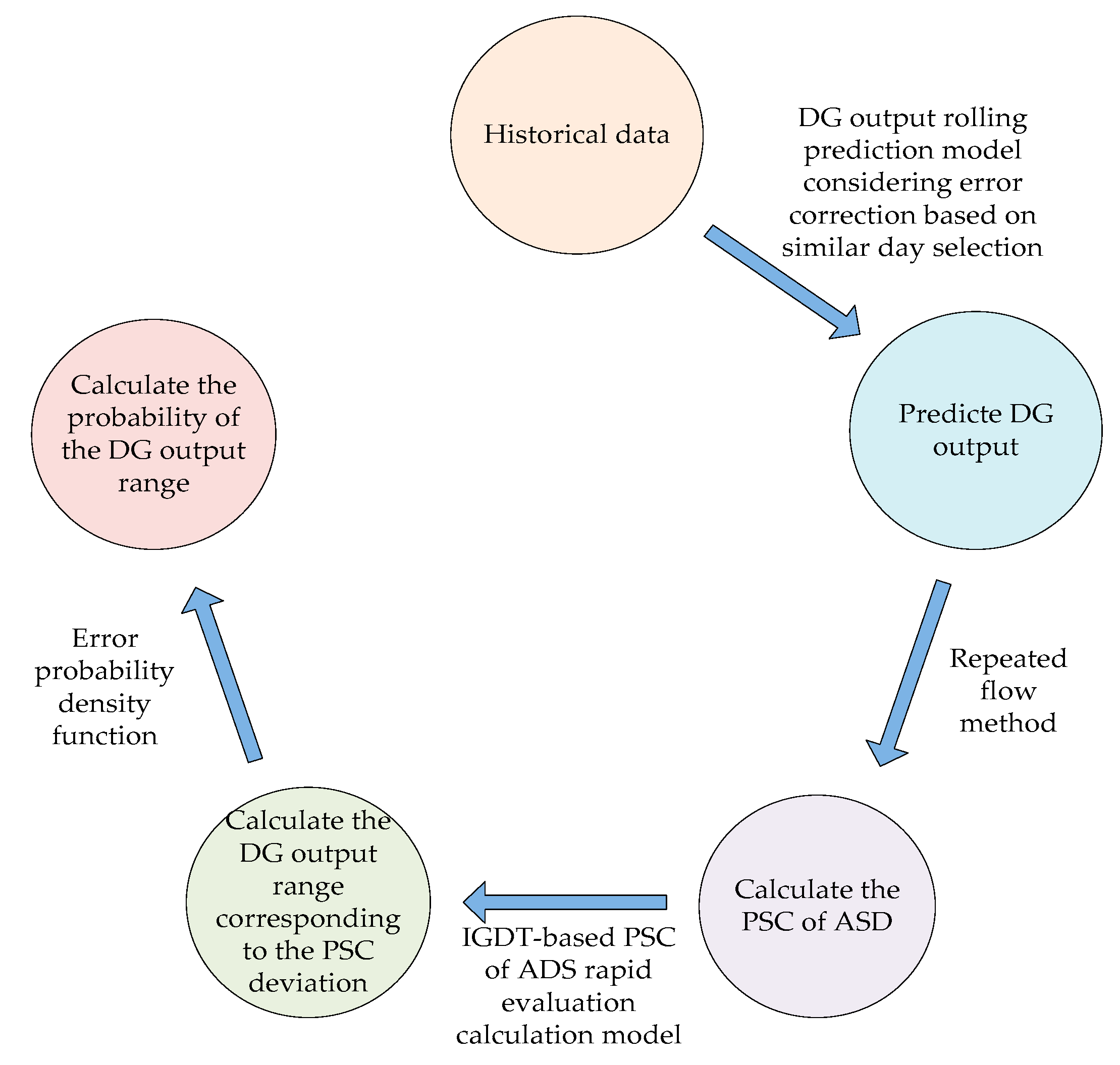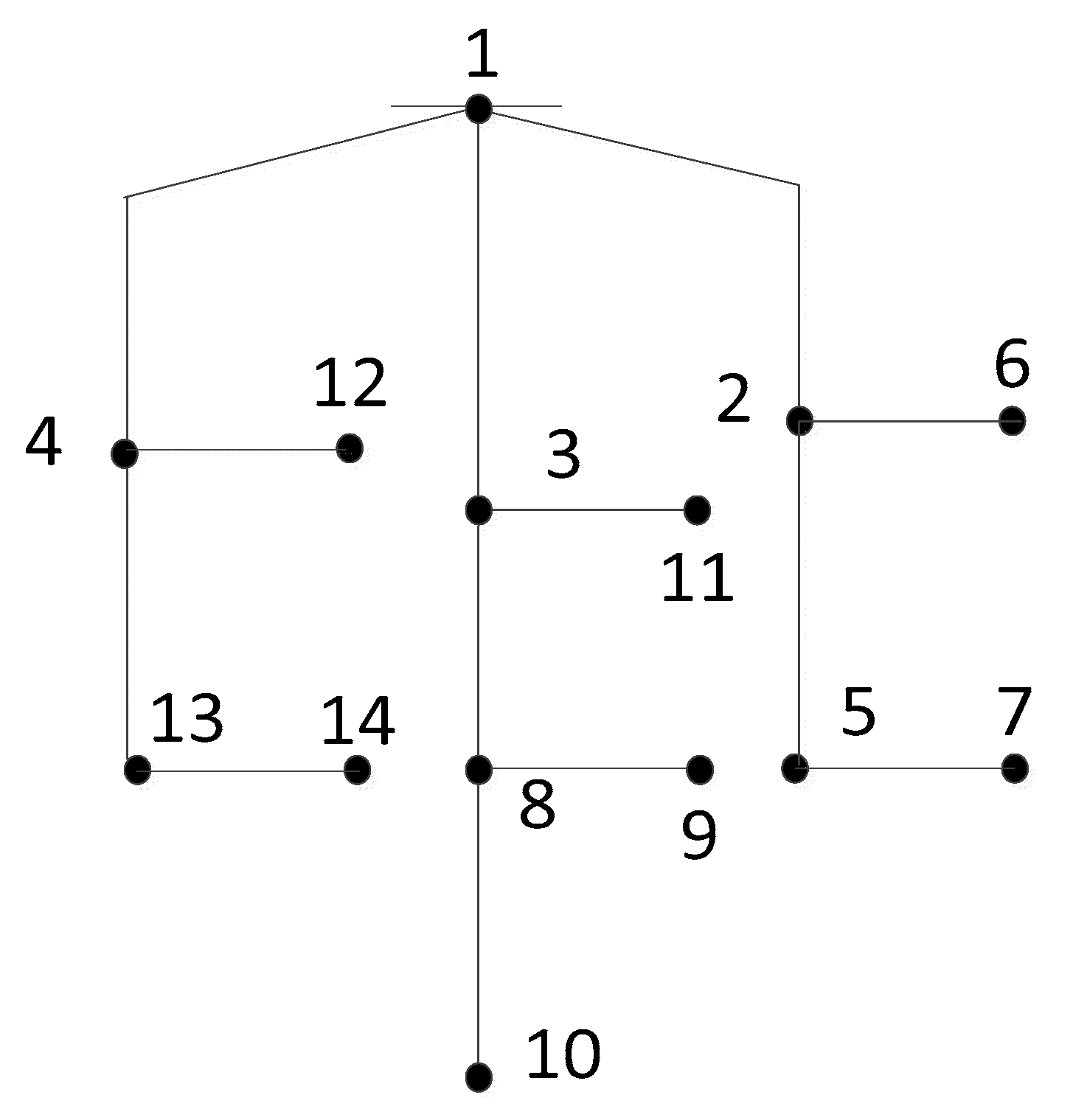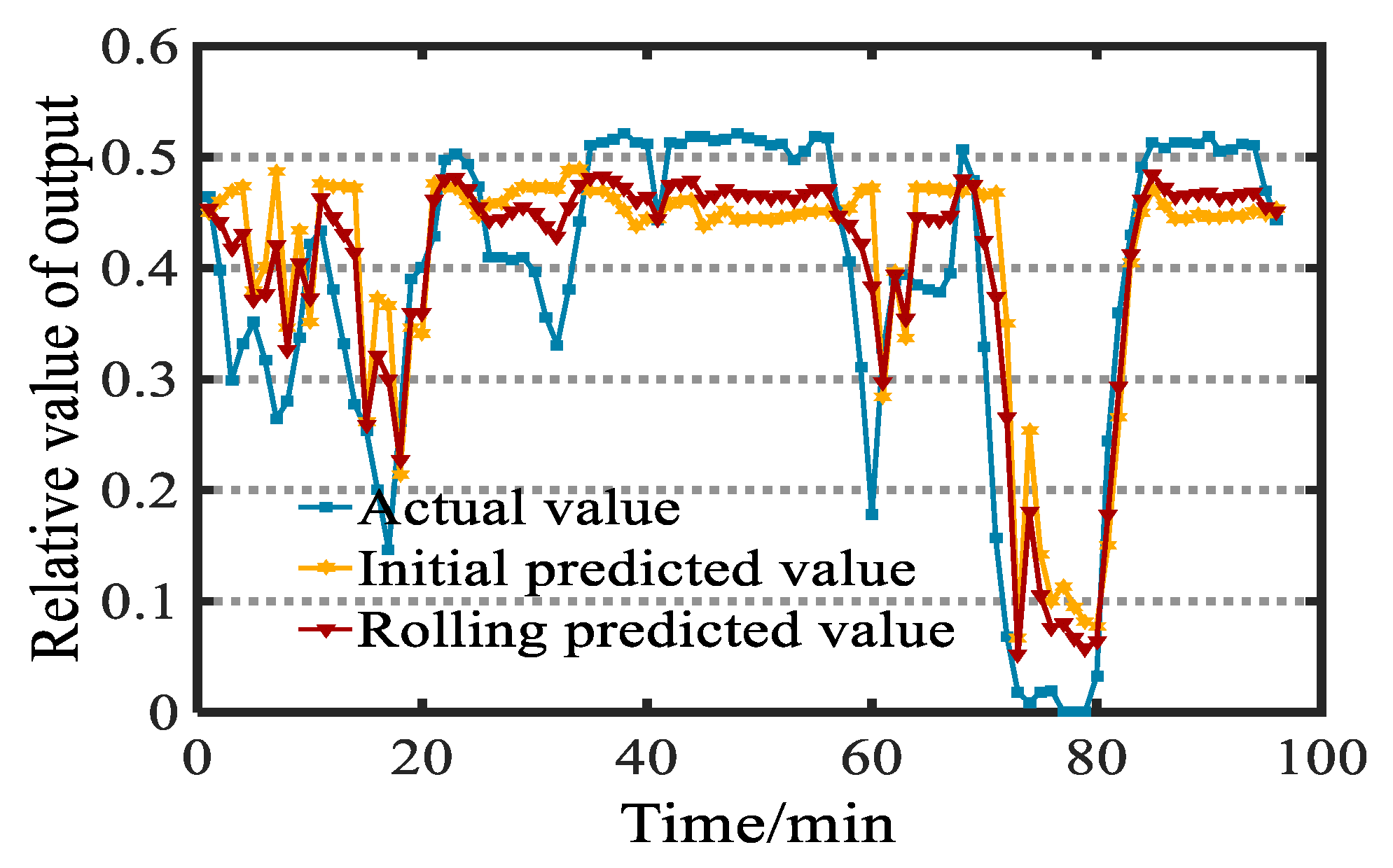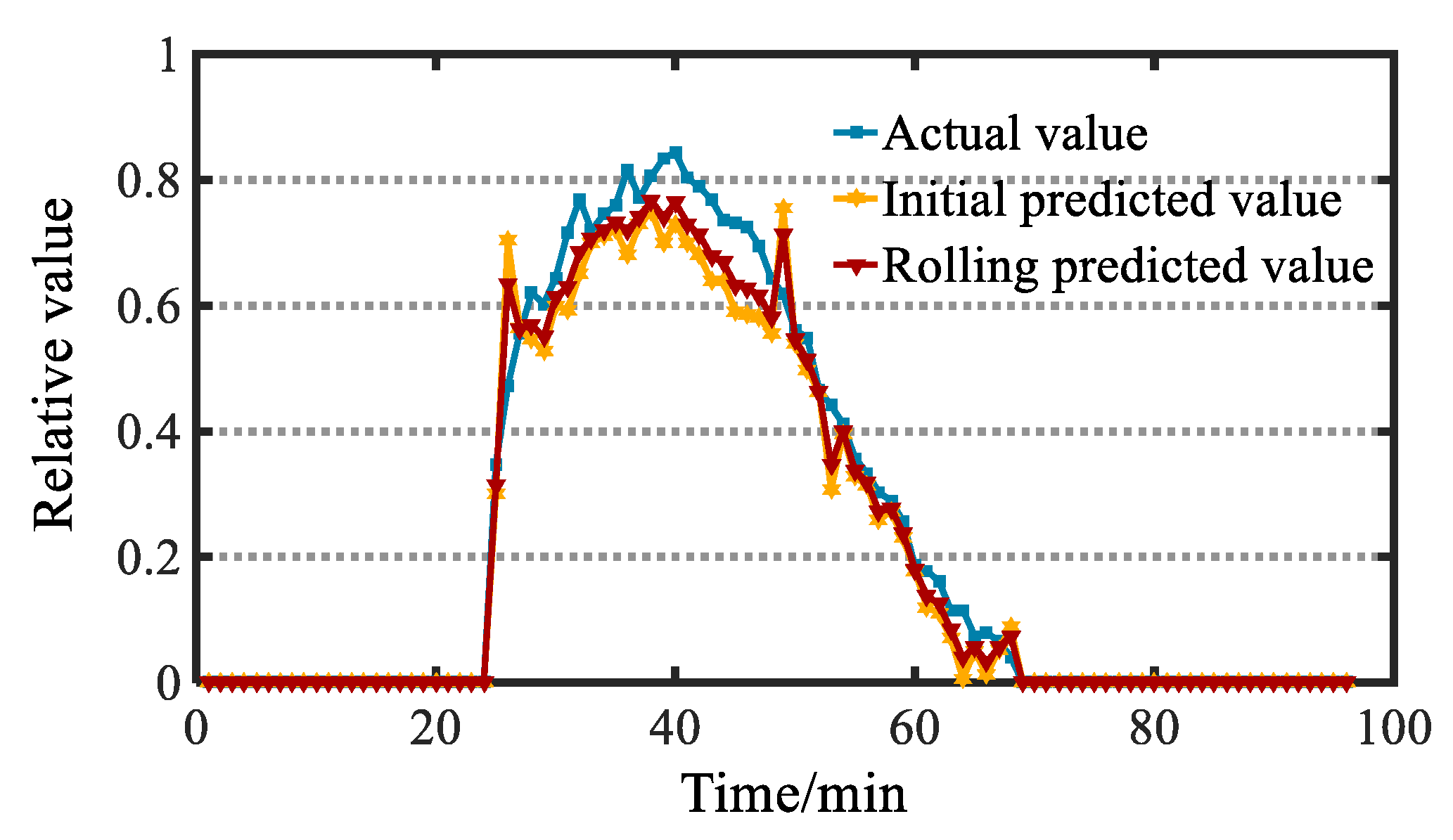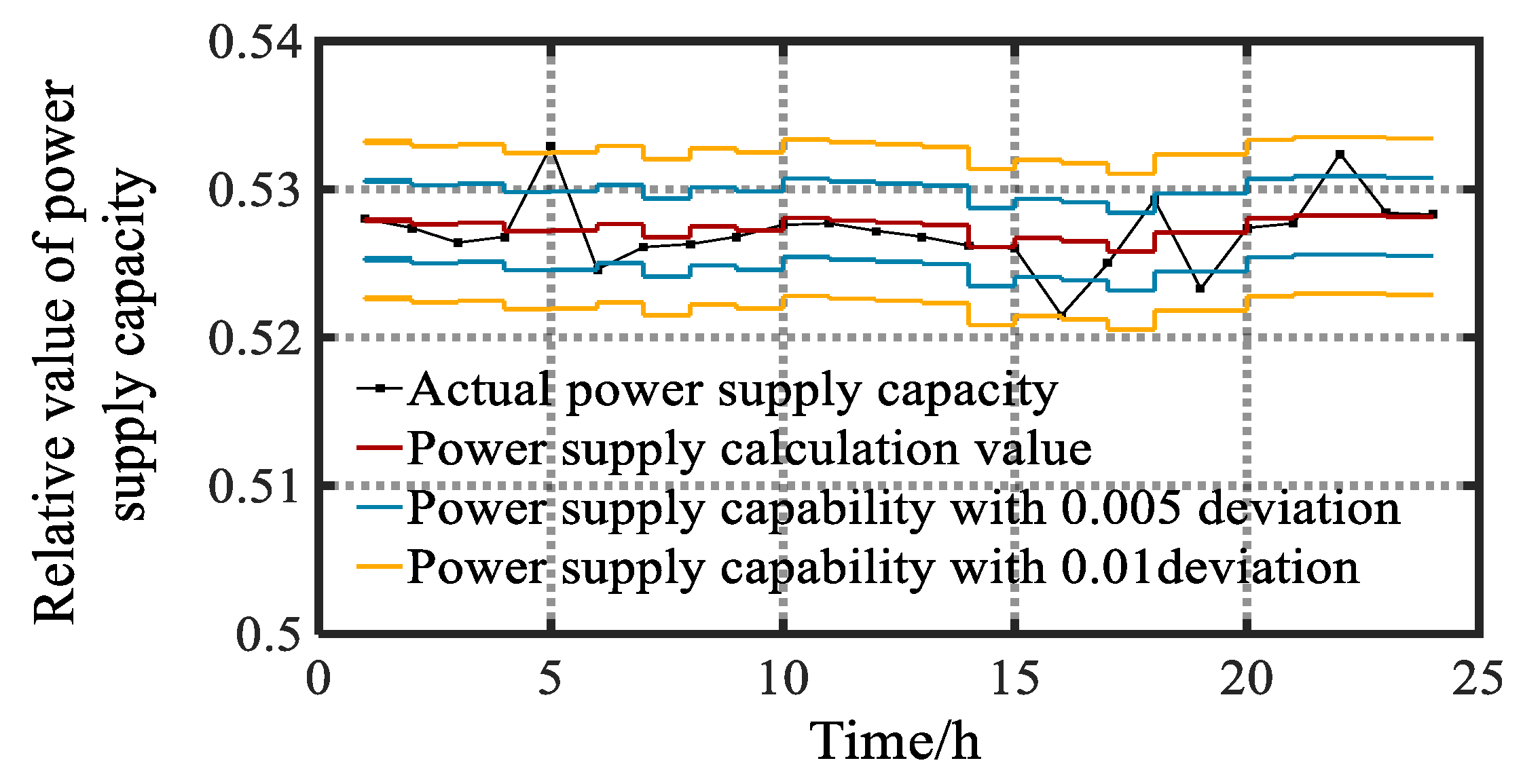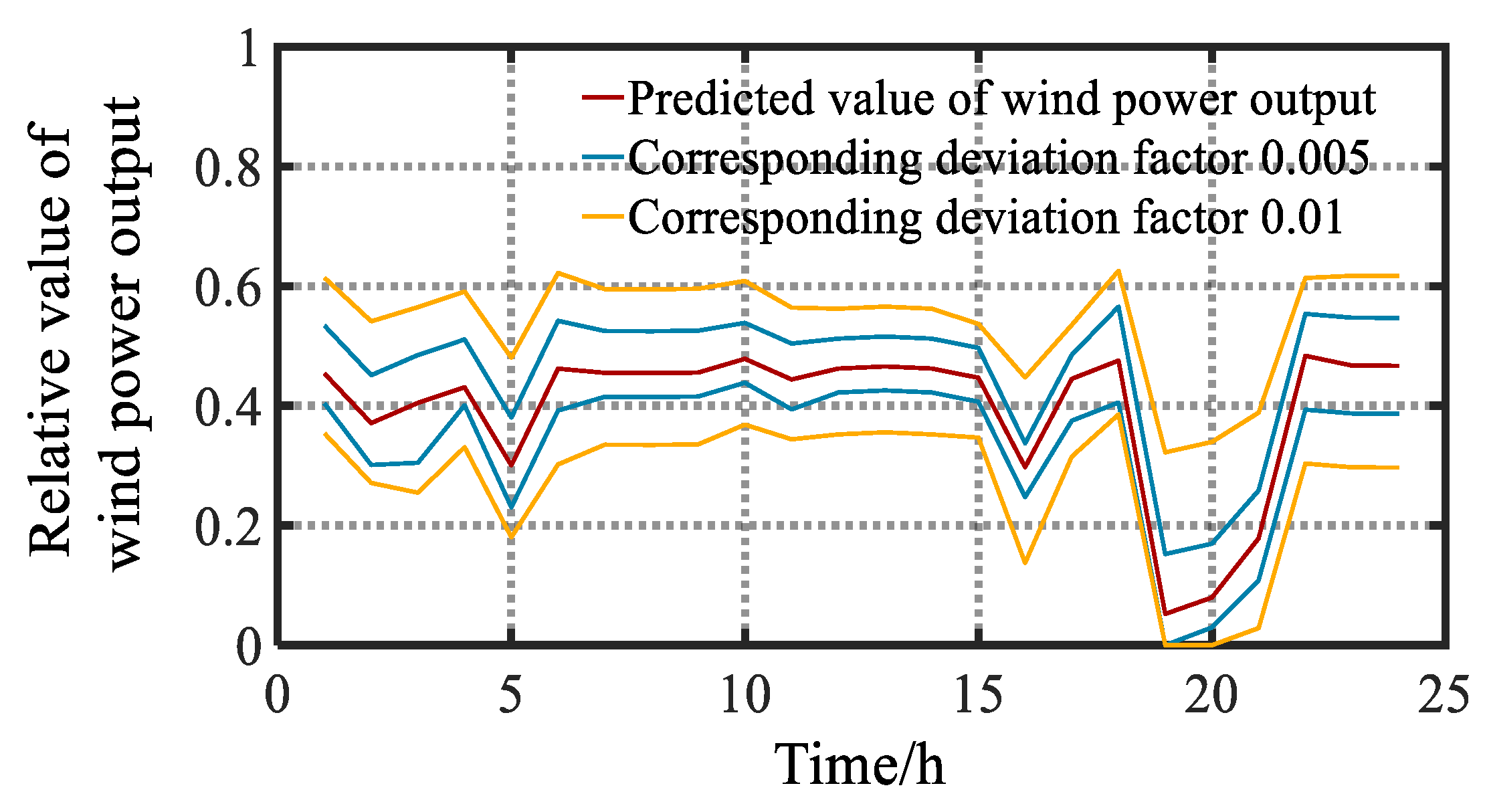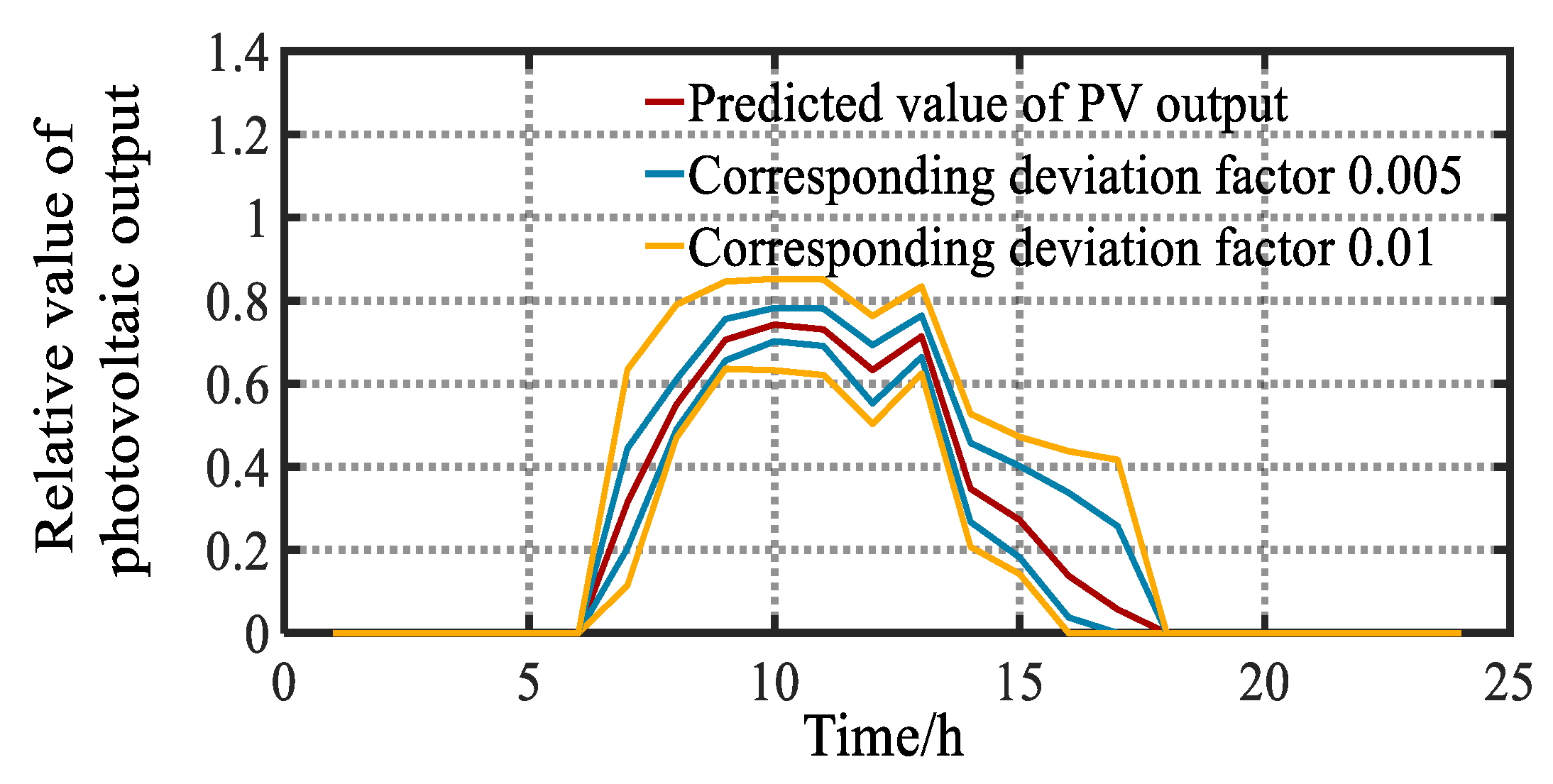1. Introduction
In recent years, the distributed generation (DG) industry has experienced rapid growth due to its broad prospects in addressing energy demand and environmental issues. After the explosive growth of China’s photovoltaic industry in 2017, by the end of June 2018, the installed capacity of photovoltaic power generation in the country reached 154.51 million kilowatts, of which distributed photovoltaics were 41.9 million kilowatts, and the cumulative grid-connected capacity reached 171.6 million kilowatts [
1]. In the “Clean Energy Absorption Action Plan” document issued by China, the decentralized and distributed renewable energy development is clearly prioritized, hence, the penetration rate of the DG on the distribution network side will continue to increase.
The uncertainty and volatility of the DG output lead to frequent changes in the operating state of the active distribution system (ADS). With the increase of the proportion of DG access, the safe and stable operation of the ADS faces greater challenges. At present, there is much research on the ultimate transmission power of transmission lines in the transmission network, and they are relatively mature. However, there are few studies on the power supply capacity (PSC) of distribution networks. The only research is to calculate the substation capacity ratio and the average line load rate. The technical indicators provide a general qualitative assessment of the PSC of the ADS [
2,
3,
4,
5], which can provide some guidance for the planning or upgrading of the distribution network, but there is insufficient support for real-time operation control decision-making of the distribution network. There are relatively few studies considering the influence of the DG on the PSC of the ADS. Reference [
6] proposes a two-layer optimization model for the maximum PSC of the ADS based on chance constrained programming. Using the opportunity constrained programming, the output of the DG with uncertainty is treated as a random variable. However, the DG output is not completely uncertain. The short-term prediction method can be used to roughly determine the DG output range. Reference [
7] proposes an evaluation method for the PSC of the ADS considering reliability flexible demand and post-fault load response. By establishing a photovoltaic annual output forecasting model for the whole year, the sampling error of the predicted values is superimposed to obtain the full-year Photovoltaic (PV) output. This method fails to analyze the influence of the DG output fluctuation on the PSC. Therefore, this paper hopes to further analyze the uncertainty of the DG output and the impact on the PSC by combining the rolling prediction algorithm and information gap decision theory (IGDT) theory.
With the acceleration of the construction of China’s electricity market, the reform of the power system has been comprehensively deepened, and the comprehensive exploration of power spot transactions has gradually been put on the agenda. Except for the trials of the first batch of eight pilot areas, the other provinces are also about to start. In the construction of the electricity spot market, the spot market will organize market entities to carry out daily, intraday, and real-time electric energy transactions. Due to the volatility of DG’s output, the spot market transactions faces great challenges. All parties involved in the spot market transaction hope to obtain the information of the PSC in time for targeted quotation and transaction. More importantly, the real-time information of the PSC is an important reference for the power trading center to conduct a safety check. It is of great significance to update the information of the PSC in an accurate and timely manner for the spot market.
The uncertainty of DG’s output has aggravated the uncertainty of the PSC of the the ADS. In order to obtain more accurate and reliable information on the PSC of ADS, in addition to the more accurate ultra-short-term prediction of DG output, it is also necessary to handle the uncertainty of DG output. There are many studies at home and abroad about the ultra-short-term prediction of DG output. The main research methods include intelligent algorithms, based on similar days or cloud-based change analysis methods. Reference [
8] uses the thought evolution algorithm to optimize the back propagation (BP) neural network, the particle swarm optimization algorithm support vector machine, and the single hidden layer feedforward network limit learning machine to respectively perform PV output prediction and the variance–covariance weight dynamic allocation method to combine prediction results. Reference [
9] proposes a robust model that can analyze cloud volume changes and ambient temperature (an important factor affecting PV output) to assess short-term PV output. The Rolling Forecast, by constantly updating the input conditions, can update the input data in time and correct the forecast results. Reference [
10] proposes a short-term power rolling prediction model for photovoltaic power generation based on the Particle Swarm Optimization Support Vector Machine (PSO-SVM). If the forecasted power cannot satisfy the given forecast accuracy, then the actual power is used to revise the forecasted power. Reference [
11] achieves a simulation of the whole year by iterating the model conditions every 24 h in a year. The model proposed in this paper can also achieve a long-term continuous operation by updating the input data.
Common methods in dealing with uncertain problems include stochastic programming [
12], robust optimization [
13], and IGDT. Stochastic programming usually requires the assumption that the probability distribution of random parameters is known. But robust optimization and IGDT don’t requires the assumption on the density function of uncertain parameters and instead introduce the probabilistic measure of risk [
13]. The IGDT can obtain the maximum fluctuation range allowed by the uncertainty parameter while ensuring that the result is not worse than the expected target. Hence, a robust decision-making scheme can be given according to the expected cost of the decision maker. This paper studies the problem of the output of the DG under the condition of ensuring the PSC. IGDT can solve this problem very well, so this paper introduces IGDT theory into the rapid evaluation of the PSC of the ADS. IGDT is divided into Risk Averse Strategy (RAS) and Risk Seeker Strategy (RSS), which provides decision makers with more choices. Because of its strong applicability, convenient use, and high computational efficiency when dealing with parameter uncertainties, the theory has been widely used in power systems. For example, Reference [
14], based on IGDT, studies the multi-source combined optimization unit commitment problem. Reference [
15], based on hybrid stochastic programming and IGDT, establishes a virtual power plant scheduling optimization model. Reference [
16] proposes a three-phase optimal power flow algorithm based on IGDT. Reference [
17] proposes a non-probabilistic IGDT model to model the uncertainties in short-term scheduling of a generation company. The self-scheduling problem is formulated for risk-neutral, risk-averse, and risk-seeker generation company.
In this paper, the IGDT is introduced into the rapid evaluation of the PSC to deal with the uncertainty of the DG output, to determine the corresponding relationship between the PSC of the ADS and DG output, and then to convert the calculating probability of the PSC range into the calculating probability of the corresponding DG output range. Firstly, this paper establishes the DG output rolling prediction model based on the similar day selection error correction. The DG output prediction value is used to calculate the corresponding PSC of the ASD through the repeated power flow method. Next, this paper establishes a IGDT-based PSC of the ADS rapid evaluation calculation model to calculate the DG output range corresponding to the PSC range, and perform probability calculation. Finally, the method is verified by example. The main contributions of this paper are highlighted as follows:
Propose a DG output rolling prediction model based on similar day selection and error correction, which provides a basis for analyzing the PSC of the ADS.
Using IGDT theory to extract the uncertainty of DG output, and quantify the impact of DG output on PSC.
